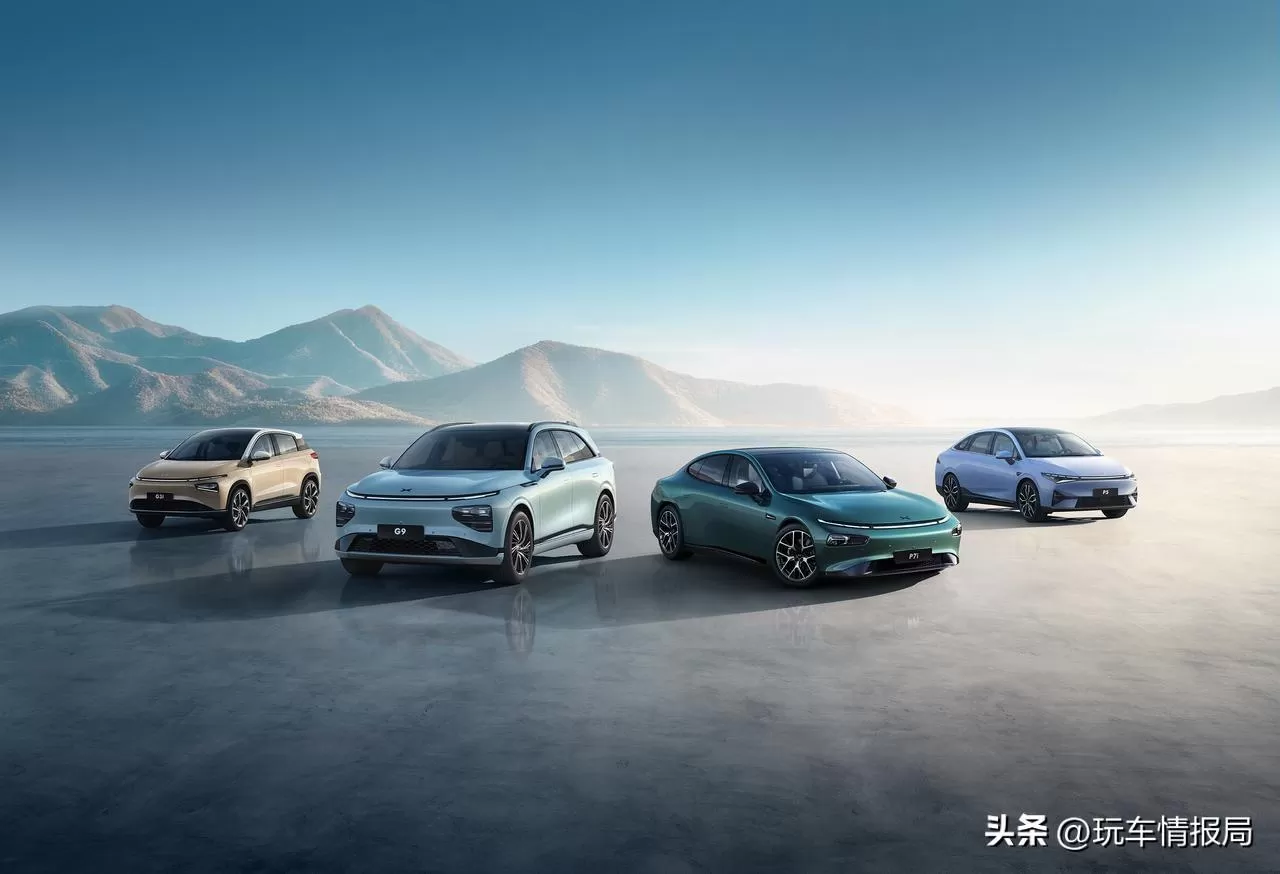Recently, a netizen revealed the latest photos of the XPeng Motors 2.0 version production car. Reportedly, this car has already been shipped to the United States and will be showcased at CES 2018. More importantly, XPeng Motors informed Che Dongxi that the 2.0 version production car will have its configuration and pricing announced this spring, with sales expected to begin within the year.
In October, XPeng Motors held an offline ceremony for its first production car at the Haima Automobile factory in Zhengzhou. However, only 15 units were produced in this first batch, which, in the traditional automotive industry, is known as small-batch trial production. These vehicles are used for testing and development purposes and are not for sale. Therefore, XPeng Motors referred to the small-batch models produced in October as the Geek Edition, or version 1.0.
Compared to version 1.0. the 2.0 version car immediately gives the impression of improved overall quality. For instance, the body panel gaps are smaller, the design is sleeker, and the paint job is bright and evenly applied.
In fact, since the 1.0 version was still a trial production model, Che Dongxi noticed issues such as less-than-perfect paint quality, uneven surface finishes, and misaligned rear badges. However, based on the photos of the 2.0 version, these issues seem to have been resolved. More details will be visible at CES 2018.
1. Front Section
From the first image, it's clear that the XPeng Motors 2.0 version features a fully LED headlight design, with three LED light sources in the center of the headlight, and daytime running lights below and to the right. Additionally, there’s a small L-shaped daytime running light under the main headlight.
Upon closer inspection, to the left of this L-shaped daytime running light and near the center of the image, there are two small round dots, which are ultrasonic sensors (parking sensors). Installing parking sensors at the front of the car helps users avoid low obstacles like stone pillars or curbs when driving at low speeds and serves as sensors for XPeng Motors’ automatic parking and autonomous driving features.
During a previous test drive of the XPeng Motors vehicle, Che Dongxi also experienced its automatic parking feature. After the user exits the vehicle, the car will park itself. When the user needs the car, they can summon it to drive out of the parking space via the key. Notably, this automatic parking supports both parallel and more challenging perpendicular parking spaces.

2. Side Section
The second image covers the side of the vehicle, offering several details.
First, the rooftop camera from the initial development phase is still present.
When XPeng Motors' first test car debuted, the rooftop camera became an interesting detail. This is essentially a piece of in-car smart hardware that can be controlled either from inside the car or via a mobile app.
So, what is it used for? When you're stuck in traffic, you can extend the camera to check the road ahead, saving you from having to climb out of the car. Or, if you want to take a group photo but can't find anyone to help, you can have the car take the picture for you.
Next, the semi-enclosed wheels from the prototype have been retained.
As everyone knows, many concept or prototype cars look cool, but once they enter production, they often lose some of their appeal. One reason is that the attractive wheels are often replaced. XPeng Motors 2.0 version retains these concept-style wheels, maintaining the vehicle's aesthetic appeal!
Additionally, the floating roof design has been adopted.
You’ll notice that the C-pillar above the taillights is black, contrasting with the body color. Why is this done? It creates a visual separation that makes the roof appear as if it’s floating above the body at first glance.

In fact, the floating roof design was popularized by Land Rover. The effect is most pronounced when the C-pillar is black and contrasts with the roof and body colors. In the exposed photos, both the roof and C-pillar are black, so the effect isn’t as obvious.
Finally, the red brake calipers and small rear spoiler enhance the sporty look.
Red brake calipers and spoilers are symbols of sportiness and passion. They were first used on racing cars, followed by some supercars, performance cars, and even family cars to cater to the tastes of younger drivers. These two small design elements in the XPeng Motors 2.0 version are quite trendy.
3. Rear Section
The last image shows the rear of the vehicle, but due to the tricky angle and low lighting, only two details are visible.
1. The XPeng Motors 2.0 version still uses the X-shaped logo, with the "X" representing the first letter of "xiao" in the Pinyin system.
2. The location of the "X" is clearly on a plastic casing, i.e., the taillight section, indicating that the XPeng Motors 2.0 version adopts the trendy integrated taillight design that runs across the entire rear of the car.
Conclusion: Cars Are Now Playing the Iteration Game
For traditional automakers, cars are mass-produced and sold only after the design is fully finalized. Generally, a mid-cycle refresh happens every 3-5 years, involving minor updates to the exterior or major changes like a new engine or transmission, but the car remains largely the same. After 7-10 years of market sales, a significant overhaul is undertaken for the next generation.
However, with players like XPeng Motors and NIO, who have an internet background, entering the automotive industry, they’ve introduced the fast iteration model from the tech world. They label their test cars, trial production cars, small-batch trial cars, and mass production cars with version numbers like 1.0. 2.0. etc., and start promoting them, conveying a message that they are continuously iterating.
Whether this iteration model is right or wrong is debatable, but it has certainly brought automakers closer to their customers, allowing users to stay updated on the company’s progress and look forward to their products.






